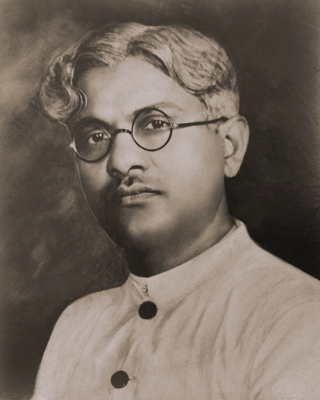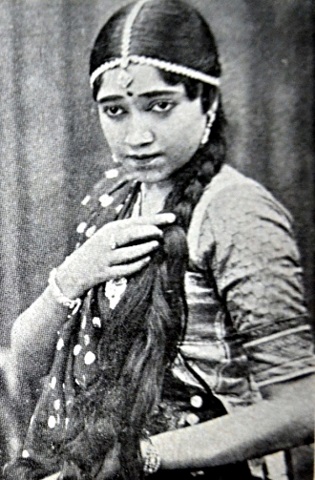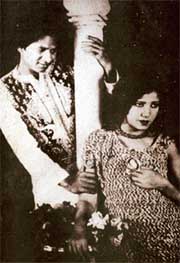This article includes a list of general references, but it lacks sufficient corresponding inline citations .(August 2013) |
Kanjibhai Rathod | |
|---|---|
| Born | Kanjibhai Rathod |
| Occupation | Film director |
Kanjibhai Rathod was an Indian film director. [1] [2]
This article includes a list of general references, but it lacks sufficient corresponding inline citations .(August 2013) |
Kanjibhai Rathod | |
|---|---|
| Born | Kanjibhai Rathod |
| Occupation | Film director |
Kanjibhai Rathod was an Indian film director. [1] [2]
Kanjibhai Rathod from Maroli village in Navsari district of south Gujarat, was considered the first successful director in Indian cinema. His rise to fame in an era when most people stayed away from films due to a peculiar stigma attached to the filmdom. [3]
Not much is known about Rathod's personal life. Film historian Virchand Dharamsey writes, "Kanjibhai was coming from a Dalit family and he can be considered the first successful professional director of India." [4] [5] [6]
Rathod began as a still photographer with the Oriental Film Company. His experience earned him a job in Kohinoor Film Company and its owner Dwarkadas Sampat made him a director.[ citation needed ]
Rathod's Bhakta Vidur , released in 1921, was perhaps the first criticism of the British colonialism in a popular feature film. This mythological allegory directly alluded to political issues, particularly the controversy over the Rowlatt Act. [7] An adaptation from a section of the Mahabharata, this film showed the British as the Kauravas and its protagonist Vidur as Gandhi. Sampat himself played the role donning the Gandhi cap and khadi shirt. The film raised a storm - while a big hit in Bombay, it was banned by the British in Karachi and Madras, write historians.[ citation needed ]
Rathod was the first film-maker to direct a crime thriller in 1920s on contemporary events. His Kala Naag (1924) was based on famous double murder case in Bombay. Rathod introduced Zubaida to film industry with his Gul-e-bakavali.[ citation needed ]
By the time he left for Saurashtra Film Company in Rajkot in 1924, Rathod had enough work on his name. At the launch of Krishna Film Company, he returned to Mumbai in 1931, the year of first talkies.[ citation needed ]
Dharamsey writes in his 'Light of Asia: Indian Silent Cinema 1912–1934' that Rathod directed five talkies out of 17 made in 1931. He remained active in the industry even in 1940s, but he was not as successful directing talkies.[ citation needed ]

Savitri and Satyavan are a legendary couple in Hinduism. Savitri is a princess who marries an exiled prince named Satyavan, who is prophesied to die early. She saves her husband from the god of death, Yama, persuading the deity to restore his life.

Zubeida Begum Dhanrajgir was an Indian actress. Early in her career, she starred in a number of silent films, which were followed by a breakthrough in the first Indian talkie Alam Ara (1931). Her other notable works include Sagar Movietone's Meri Jaan (1931) and Devdas (1937).

Olga Engl was an Austrian-German stage and motion picture actress who appeared in nearly 200 films.

Gujarati cinema, also known as Dhollywood, is the segment of Indian cinema, dedicated to the production of motion pictures in the Gujarati language widely spoken in the state of Gujarat. It is based in Ahmedabad. It is one of the major regional and vernacular film industries of the cinema of India, having produced more than one thousand films since its inception.
Kohinoor Film Company was an Indian film studio established in 1918 by Dwarkadas Sampat (1884-1958).

Chandulal Jesangbhai Shah was a famous director, producer and screenwriter of Indian films, who founded Ranjit Studios in 1929.

Gohar Khayyam Mamajiwala, also known as Miss Gohar, was an Indian singer, actress, producer and studio owner.

Bhakta Vidur is a 1921 silent Indian film directed by Kanjibhai Rathod and made under Kohinoor Film Company banner. In this film the Hindu mythological character Vidura was moulded on the personality of Mohandas Karamchand Gandhi. This was the first Indian film to face a ban.

Anna Hari Salunke, also known as A. Salunke and Annasaheb Saluke, was an Indian actor who performed female roles in very early Indian cinema and also a cinematographer. He is the first person to perform as a heroine in Indian cinema when he played the role of Queen Taramati in Dada Saheb Phalke's first full-length film, Raja Harishchandra (1913). In 1917, Salunke became the first to play a double role in Indian cinema, by playing the roles of both the hero and heroine in Lanka Dahan.

Master Vithal or Vithal (1906-1969) was an actor in Indian cinema, best known as the hero of India's first talkie Alam Ara (1931) and of Marathi and Hindi silent stunt films, which gave him the epithet as the Douglas Fairbanks of India.
Chandrahasa is a 1933 Hindi mythological costume drama film directed by Sarvottam Badami. It was the first Hindi film directed by Badami, bringing him into prominence, even though he did not know Hindi. It was also one of the first Talkie versions of the film which was remade several times. Produced by Sagar Movietone, it had music composed by S. P. Rane. The film starred Noor Mohammed Charlie, Gulzar, Kamala, Master Bachchu, Dinkar, Mehboob Khan and Baburao Sansare.
Shri Nath Tripathi was an Indian composer, whose active years were from the 1930s to the 1980s.
Avinash Vyas was an Indian music composer, lyricist and singer of Gujarati films who composed music for over 190 Gujarati films. He was a winner of Gujarat State Film award for the best lyricist and best music 25 times. He was honoured by the Government of India in 1970 with Padma Shri, the fourth highest Indian civilian award.

Homi Master (?–1949) was an actor-director of early Indian cinema. His work extended from the silent era to the talkie era and up to his death. He produced his best films for Kohinoor Film Company and he has been referred to as "silent cinema's most successful film-maker".
Khalil was an Indian cinema actor of silent and talkie films. He achieved stardom with silent films like Gul-E-Bakavali (1924), Kulin Kanta (1925), and Lanka Ni Laadi (1925) which was a major success commercially. His other successes included Cinema Queen (1925) with Sulochana, Draupadi (1931), and Daily Mail (1930). Khalil is referred to as the "macho hero".
Arvind Pandya was an Indian actor. In his career spanning 35 years, he acted in more than one hundred films including 73 Gujarati films. He also worked in Hindi films and Gujarati theatre.
Manilal Joshi was a film director of silent films from Indian cinema.
{{cite encyclopedia}}: CS1 maint: location missing publisher (link)